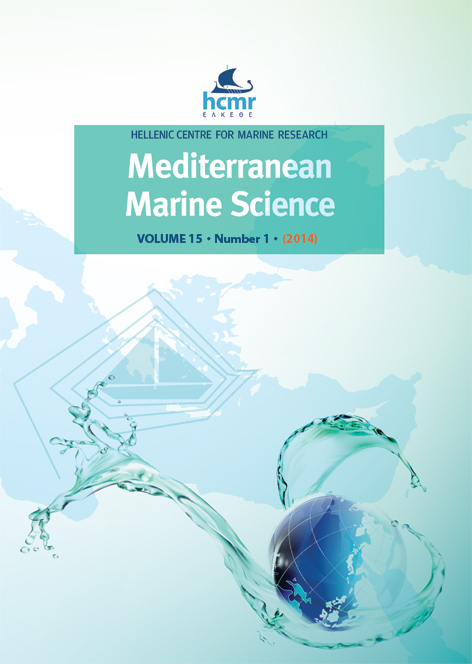New Fisheries-related data from the Mediterranean Sea (April 2015)
Abstract
In this second Collective Article with fisheries-related data from the Mediterranean Sea we present the evaluation of bony structures in aging of Barbus tauricus, otolith dimensions-body length relationships for two species (Trachinus draco and Synchiropus phaeton), information on the growth of juvenile Thunnus thynnus and of Ruvettus pretiosus, weight-length relationships for three species (Aulopus fiamentosus, Thunnus thynnus and Tylosurus acus imperialis) and data on feeding habits and reproduction of Aulopus fiamentosus.
Article Details
- Come citare
-
KARACHLE, P., BAŞUSTA, A., BAŞUSTA, N., BOSTANCI, D., BUZ, K., GIRGIN, H., CHATER, I., KOKOKIRIS, L., KONTAŞ, S., KTARI, M.-H., MARAVELIAS, C., MINOS, G., OZER, E., ROMDHANI, A., TIRALONGO, F., TIBULLO, D., TSERPES, G., & VASILAKOPOULOS, P. (2015). New Fisheries-related data from the Mediterranean Sea (April 2015). Mediterranean Marine Science, 16(1), 285–293. https://doi.org/10.12681/mms.1293
- Fascicolo
- Vol 16, No 1 (2015)
- Sezione
- Collective Article B
Authors who publish with this journal agree to the following terms:
- Authors retain copyright and grant the journal right of first publication with the work simultaneously licensed under a Creative Commons Attribution Non-Commercial License that allows others to share the work with an acknowledgement of the work's authorship and initial publication in this journal.
- Authors are able to enter into separate, additional contractual arrangements for the non-exclusive distribution of the journal's published version of the work (e.g. post it to an institutional repository or publish it in a book), with an acknowledgement of its initial publication in this journal.
- Authors are permitted and encouraged to post their work online (preferably in institutional repositories or on their website) prior to and during the submission process, as it can lead to productive exchanges, as well as earlier and greater citation of published work (See The Effect of Open Access).













